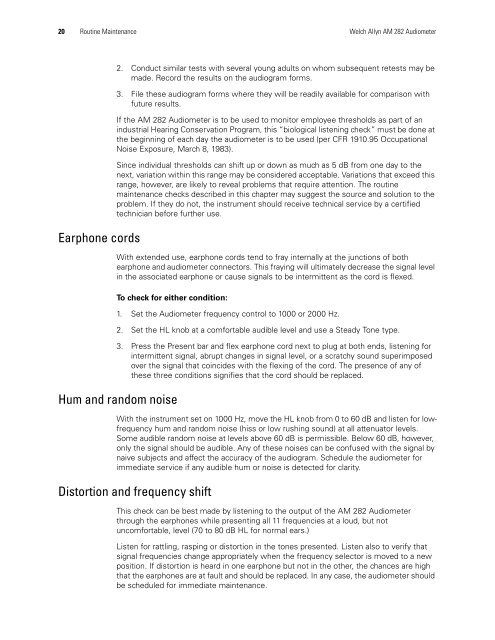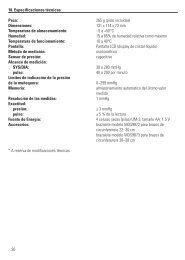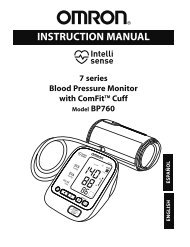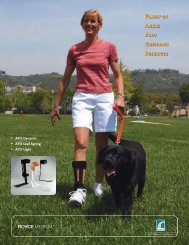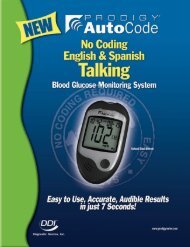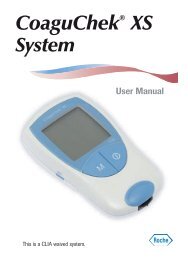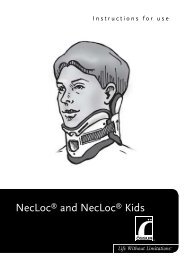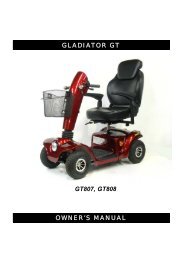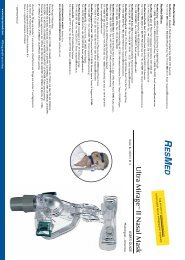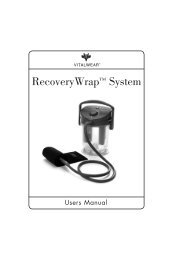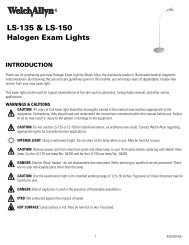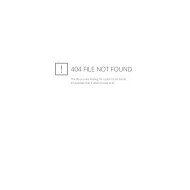User Manual - Medical Supplies
User Manual - Medical Supplies
User Manual - Medical Supplies
You also want an ePaper? Increase the reach of your titles
YUMPU automatically turns print PDFs into web optimized ePapers that Google loves.
20 Routine Maintenance Welch Allyn AM 282 AudiometerEarphone cords2. Conduct similar tests with several young adults on whom subsequent retests may bemade. Record the results on the audiogram forms.3. File these audiogram forms where they will be readily available for comparison withfuture results.If the AM 282 Audiometer is to be used to monitor employee thresholds as part of anindustrial Hearing Conservation Program, this “biological listening check” must be done atthe beginning of each day the audiometer is to be used (per CFR 1910.95 OccupationalNoise Exposure, March 8, 1983).Since individual thresholds can shift up or down as much as 5 dB from one day to thenext, variation within this range may be considered acceptable. Variations that exceed thisrange, however, are likely to reveal problems that require attention. The routinemaintenance checks described in this chapter may suggest the source and solution to theproblem. If they do not, the instrument should receive technical service by a certifiedtechnician before further use.With extended use, earphone cords tend to fray internally at the junctions of bothearphone and audiometer connectors. This fraying will ultimately decrease the signal levelin the associated earphone or cause signals to be intermittent as the cord is flexed.To check for either condition:1. Set the Audiometer frequency control to 1000 or 2000 Hz.2. Set the HL knob at a comfortable audible level and use a Steady Tone type.3. Press the Present bar and flex earphone cord next to plug at both ends, listening forintermittent signal, abrupt changes in signal level, or a scratchy sound superimposedover the signal that coincides with the flexing of the cord. The presence of any ofthese three conditions signifies that the cord should be replaced.Hum and random noiseWith the instrument set on 1000 Hz, move the HL knob from 0 to 60 dB and listen for lowfrequencyhum and random noise (hiss or low rushing sound) at all attenuator levels.Some audible random noise at levels above 60 dB is permissible. Below 60 dB, however,only the signal should be audible. Any of these noises can be confused with the signal bynaive subjects and affect the accuracy of the audiogram. Schedule the audiometer forimmediate service if any audible hum or noise is detected for clarity.Distortion and frequency shiftThis check can be best made by listening to the output of the AM 282 Audiometerthrough the earphones while presenting all 11 frequencies at a loud, but notuncomfortable, level (70 to 80 dB HL for normal ears.)Listen for rattling, rasping or distortion in the tones presented. Listen also to verify thatsignal frequencies change appropriately when the frequency selector is moved to a newposition. If distortion is heard in one earphone but not in the other, the chances are highthat the earphones are at fault and should be replaced. In any case, the audiometer shouldbe scheduled for immediate maintenance.


